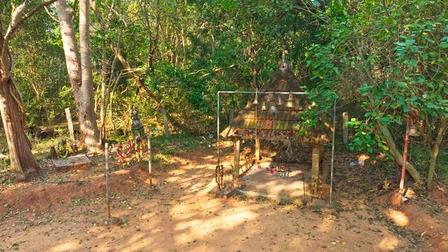
TN Govt Declares Kasampatty Sacred Grove As Biodiversity Heritage Site
The Forest Department announced the notification on Thursday, publishing it in the Tamil Nadu Government Gazette under the provisions of the Biological Diversity Act, 2002.
Located near the Alagarmalai Reserve Forest, the Kasampatty sacred grove spans 4.97 hectares and is surrounded by lush mango plantations. This ecologically significant area acts as a vital green bridge, supporting environmental balance and biodiversity while also serving local religious and cultural practices.
Biodiversity heritage sites are designated areas rich in wild and domesticated species, home to rare and threatened flora and fauna, and notable for their ecological and evolutionary value.
The Veera Kovil sacred grove has long been revered by local communities, who worship the deity 'Veeranan' at the temple within the grove. Beyond its spiritual significance, the grove plays a key role in climate regulation and biodiversity conservation.
According to the official press release, the site hosts an impressive variety of species - 48 plant species, 22 shrubs, 21 lianas (woody vines), and 29 herbs.
It also shelters more than 12 species of birds, along with small mammals, reptiles, and numerous insects, highlighting the grove's genetic richness.
The notification follows a resolution passed by the Reddiyapatty Panchayat Council, aimed at protecting the land and ensuring continued public access to the Veera Kovil Temple.
The declaration was made upon the recommendation of the Dindigul district collector and with support from the Tamil Nadu biodiversity board and local authorities.
This designation comes more than two years after Tamil Nadu's first BHS recognition in November 2022, when the government declared Arittapatti and Meenakshipuram villages in Madurai district as the state's first Biodiversity heritage site.
The Arittapatti BHS covers a total of 193.43 hectares - 139.63 hectares in Arittapatti village (Melur block) and 53.8 hectares in Meenakshipuram village (Madurai East taluk).
Arittapatti is ecologically and historically significant, home to over 250 bird species, including key raptors like the Laggar Falcon, Shaheen Falcon, and Bonelli's Eagle.
The region also supports diverse wildlife such as the Indian Pangolin, Slender Loris, and pythons.
Arittapatti's seven surrounding hillocks form a natural watershed system that recharges 72 lakes, 200 natural springs, and three check dams.
Among them is the Anaikondan tank, constructed during the Pandiyan dynasty in the 16th century.
To safeguard biodiversity and preserve cultural and architectural heritage, the Tamil Nadu government designated both Arittapatti and Kasampatty as Biodiversity Heritage Sites under Section 37 of the Biological Diversity Act, 2002.

Legal Disclaimer:
MENAFN provides the information “as is” without warranty of any kind. We do not accept any responsibility or liability for the accuracy, content, images, videos, licenses, completeness, legality, or reliability of the information contained in this article. If you have any complaints or copyright issues related to this article, kindly contact the provider above.






















Comments
No comment